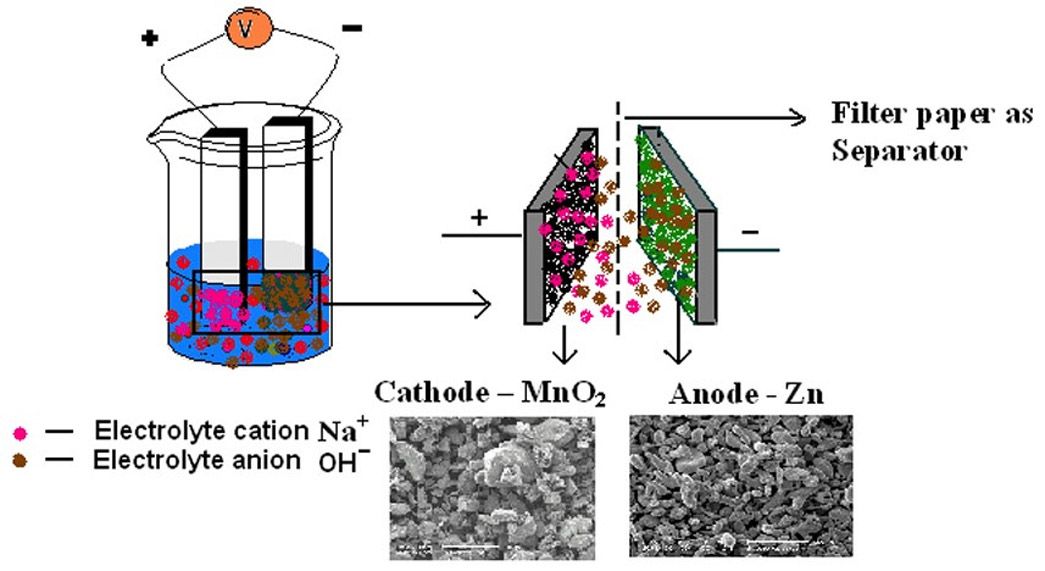By Gary Elinoff, contributing writer
Saltwater batteries are not likely to ever substitute for lithium-ion batteries for use in portable devices. This is because they can’t hold as much charge in the same package size and weight, or putting it another way, they are less energy-dense. But they hold some powerful advantages in applications in which size and weight are less important factors.
Basic batteries
The building blocks of a battery are the cathode and anode, as well as an electrolyte that allows the cathode and anode to exchange ions in one direction as they deliver electricity or in the other direction as it is being recharged.
For a lithium-ion battery, the anode, or the negative terminal, can be graphite, while the cathode, or positive terminal, might be constructed of a lithium metal oxide. The electrolyte allows lithium ions (hence the name) to flow from cathode to anode during charging as illustrated or in the opposite direction when the battery is delivering, rather than storing, energy.
The separator is porous to the traveling ions but must prevent the anode or cathode from touching or disaster results. The electrolyte is generally flammable.
All in all, as recent news events have proven, the lithium-ion battery is a dangerous proposition. We’ve taken a walk on the wild side; now let’s relax and move over to the mild side.
Saltwater batteries
The electrolyte for a saltwater battery is nothing more than that — salt water — hence the device’s name. The anode can be carbon, and the cathode can be a material such as manganese oxide. In this illustration, the anode is zinc.

The essence of a saltwater battery. Image source: SPIE.
With no hazardous materials in their construction, unlike lithium-ion batteries, they are non-toxic and they can’t explode. Because of this, there is no need for the complex and troublesome electronic circuitry that every lithium-ion battery needs to ensure that they charge and discharge only within safe parameters. In addition, unlike their lithium-based cousins, saltwater batteries can be more deeply discharged (drained of electrical energy) with no damage to the battery.
Commercialization of saltwater batteries
There is, so far, one major manufacturer of saltwater batteries, and it has run into some non-technological problems, so at least temporarily, they have suspended operations. The technology itself has been well-received, but in the battery business, a producer has to get big fast or go home. Smart money expects another concern with deeper pockets, most likely a provider of solar energy systems, to pick up the ball and run with it.
It’s especially worth noting that many economists predict a looming worldwide shortage of lithium itself due to the electric car boon. Saltwater batteries are an emerging technology, and many different forms are under development, but one thing that they all share is a very prosaic bill of materials — there will be no shortages of carbon, manganese oxide, water, or salt.
Indeed, saltwater batteries are so safe that simplified versions make great projects for kids. Watch this little guy light it up.
Storing renewable energy
The biggest disadvantage of all forms of salt-water batteries is that, to store a given amount of electricity, they are bulkier and heavier than other commercially available batteries. As it turns out, there is one huge potential use for these devices in which that will be no issue at all — smoothing out power from large-scale renewable-energy-generation plants.
The sun doesn’t always shine, and the wind doesn’t always blow. For this reason, the electrical output of renewable plants is, by nature, intermittent. Saltwater batteries can be charged by that excess energy generated during times of high output and then release that stored power to the grid when it is needed.
Since the sun shines as brightly and the wind blows as intensely in remote areas as they do anywhere else, renewable energy plants are most often located in remote areas where land is cheap. In such locations, the added footprint of a less energy-dense battery system is not an issue, making saltwater batteries the ideal choice. The electricity can be ferried to population centers via another just-emerging technology — high-voltage DC superconducting lines — but that’s a subject for another blog.
Advertisement
Learn more about Electronic Products Magazine





